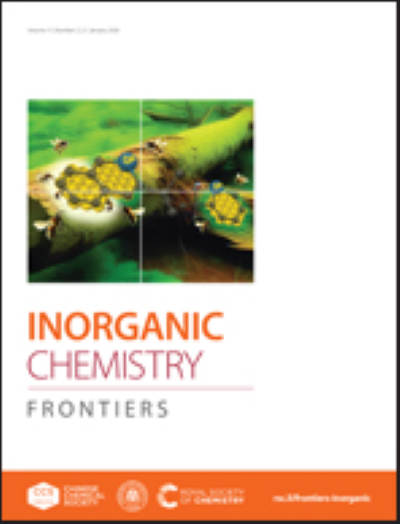碳纳米纤维对硅碳负极材料的增强作用研究进展
IF 6.4
1区 化学
Q1 CHEMISTRY, INORGANIC & NUCLEAR
引用次数: 0
摘要
本文综述了碳纳米纤维(CNFs)对锂离子电池硅碳负极材料电化学性能的增强作用。cnfs增强的硅碳电极材料具有构建导电网络、缓冲硅体积膨胀、促进离子传输和稳定电极/电解质界面相互作用等优点。各种硅碳纳米纤维复合材料被概括为Si/CNF、Si - CNF@C、Si - o-CNF、分层碳- Si/CNF、C-Si-CNF和Si@porous碳/多孔CF。关键的结构设计包括通过碳封装限制硅膨胀的夹层结构、通过静电自组装增强颗粒分散的交织结构、优化锂离子通过有序孔扩散的蜂窝结构。采用包覆或核壳结构,保留膨胀空间,提高机械稳定性。综述了硅碳纳米纤维复合材料的制备方法,包括静电自组装法、静电纺丝法和电泳法。在活性界面相容性、新型电极材料和结构、综合建模和理论仿真计算等方面提出了若干挑战。提出了相应的解决方法,包括表面功能化、多尺度模拟和机器学习引导优化。展望了cnfs增强硅碳负极材料在电化学储能领域的新设计和进一步发展。本文章由计算机程序翻译,如有差异,请以英文原文为准。

Reinforcement effect of carbon nanofibers on silicon–carbon anode materials: a review
This review examines the reinforcement effect of carbon nanofibers (CNFs) in enhancing the electrochemical performance of silicon–carbon anode materials for lithium-ion batteries. CNFs-reinforced silicon–carbon electrode materials exhibit the advantages of constructing conductive networks, buffering silicon volume expansion, facilitating ion transport and stabilizing electrode/electrolyte interface interactions. Various silicon–carbon nanofiber composites are generalized and listed as Si/CNF, Si–CNF@C, Si–o-CNFs, hierarchical carbon–Si/CNF, C–Si–CNF, and Si@porous carbon/porous CF. The key structural designs include sandwich structures to confine silicon expansion via carbon encapsulation, interwoven architectures to enhance particle dispersion through electrostatic self-assembly, honeycomb frameworks to optimize lithium-ion diffusion via ordered pores, and wrapping or core–shell structures to reserve expansion space and improve mechanical stability. Various preparation methods for forming silicon–carbon nanofiber composites are summarized, including electrostatic self-assembly, electrospinning, and electrophoretic deposition. Several challenges in active interfacial compatibility, new electrode materials and structures, comprehensive modeling and theoretical simulation calculations are proposed. The corresponding possible solution methods are suggested, which include surface functionalization, multiscale simulations, and machine learning-guided optimization. Perspective is also provided for the new design and further development of CNFs-reinforced silicon–carbon anode materials for electrochemical energy storage applications.
求助全文
通过发布文献求助,成功后即可免费获取论文全文。
去求助
来源期刊

Inorganic Chemistry Frontiers
CHEMISTRY, INORGANIC & NUCLEAR-
CiteScore
10.40
自引率
7.10%
发文量
587
审稿时长
1.2 months
期刊介绍:
The international, high quality journal for interdisciplinary research between inorganic chemistry and related subjects
 求助内容:
求助内容: 应助结果提醒方式:
应助结果提醒方式:


